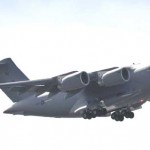“¦the nation would require at the very least a combat fleet of 45 squadrons equipped with modern aircraft to be able to contend with the simultaneous onslaught of both the adversaries”¦
In the utterances of the political and military leadership in the last six months one can not only discern a tinge of complacency but also be inclined to infer that the IAF is neither fully geared to meet with challenges today nor is there any certainty of it being capable of being so in the foreseeable future.
Combat Power of the IAF
There may be some merit in the view held by experts that as the world moves towards globalisation and economic integration, the chances of open and large scale conflicts between nations would recede. However, a nation, especially if economically prosperous, may render itself vulnerable to exploitation or manipulation by one that is militarily stronger. To play a meaningful role in the comity of nations and for the exercise of political influence internationally, it is essential to complement economic power and diplomacy with deterrent military might since it would not be possible to negotiate successfully in the regional or global arena from a position of weakness.
If India is to go on the offensive against one of the adversaries and fight a holding action against the other, the assessment is that it will require a combat fleet of at least 50 squadrons.
China is emerging as a rival in the region economically and militarily. She is becoming a threat to Indian interests not just by herself but more dangerously in collusion with Pakistan. As assessed by the IAF, the nation would require at the very least a combat fleet of 45 squadrons equipped with modern aircraft to be able to contend with the simultaneous onslaught of both the adversaries in a strategically defensive posture.
As per reports in the media, the government plans to enhance the combat fleet strength of the IAF to 42 squadrons. However, well on the road to emerging as a regional power, the nation can no longer bask in the comfort of a self imposed moratorium against proactive approach or expeditionary action. If India is to go on the offensive against one of the adversaries and fight a holding action against the other, the assessment is that it will require a combat fleet of at least 50 squadrons.
From a purely military perspective, since the Second World War, air power has always played a predominant role in major conflicts. The outcome of wars in the future in all likelihood, will be in favour of the side that has the ability to exploit the full potential of aerospace power of which the combat fleet is and will continue to be the spearhead.
Unfortunately, over the last decade, the number of fighter squadrons in the IAF has reduced from the authorised strength of 39.5 to 28. The strength of combat squadrons is likely to decline further as the older versions of MiG21 aircraft are phased out without ready replacement.
The combat fleet would constitute the core capability of the IAF, backed by range of support elements: ground-based, airborne and space based surveillance systems; efficient and secure communication networks; state-of-the-art air defence weapon systems; strategic and tactical airlift capability, both fixed and rotary wing; network-centric warfare capability; and force multipliers such as Flight Refuelling Aircraft and Unmanned Aerial Systems. It is also important that both the combat fleet of the IAF and the supporting elements grow in tandem in strength and capability.
Unfortunately, over the last decade, the number of fighter squadrons in the IAF has reduced from the authorised strength of 39.5 to 28. The strength of combat squadrons is likely to decline further as the older versions of MiG21 aircraft are phased out without ready replacement. Even after the IAF receives its full complement of Su30 MKI by 2014 as planned, the strength of the combat fleet is unlikely to be restored to its currently authorised level unless there is timely induction of new fleets. Although the Light Combat Aircraft (LCA) Tejas has received Initial Operational Clearance, it is still at least seven years away from Final Operational Clearance.
Besides, the Tejas Mk I is grossly underpowered and as it does not measure up to the performance parameters stipulated by the IAF, the aircraft has been ordered only in limited numbers.
| Editor’s Pick |
The Mk II version of the Tejas will have a new engine, the US GE F414 which has the required thrust rating but would involve extensive redesign work on the airframe. In effect the Tejas Mk II on account of a redesigned airframe would practically be a new aircraft and in all probability, would require a fresh series of developmental flights and fresh operational clearance.
The Tejas Mk II project being infinitely complex and given the experience with Tejas Mk I, the time frame for its completion cannot be predicted with any degree of certainty. It would therefore not be prudent for the IAF to compute force levels and operational capability based on the availability of the Tejas Mk I or Mk II – assurances by the industry notwithstanding.




